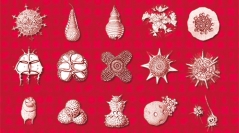

 Geodiversitas
43 (21) - Pages 709-1185
Geodiversitas
43 (21) - Pages 709-1185This catalogue provides the most complete and revised work of Cenozoic genera as of December 2019. It is the result of four exhausting years of collaborative work. The first radiolarian genus was described in 1834 by Meyen, so this revision covers 185 years of research on polycystine radiolarians. Additionally, it concludes a pharaonic research project on the taxonomy of all described genera of radiolarians that started fifteen years ago. The main objective was to provide radiolarian researchers with a modern and revised version of the Campbell’s work accessible to everyone in an open access journal. This catalogue is organized as a series of plates displaying the images of the type species consisting of all available images of the name-bearing type for the generic names in the Cenozoic Era. This catalogue encompasses extensive information in a very limited space. There are a total of 1683 revised genera. All valid genera provided appear with a diagnosis and an additional support image which is included to ensure the identification of the genus. This catalogue is somewhat different from previous issues on this thematic series. For this reason, it is recommended that the reader refer to the “guide for the users” for a comprehensible reading of the catalogue and to understand the taxonomic acts adopted in this revision. At the end of the plates, the reader will find a set of synthetic figures that display the most important result of this revision project, a result of 409 valid genera. Since numerous taxa of Christian Gottfried Ehrenberg and Ernst Haeckel had no fixed holotype, 207 lectotypes and 7 paralectotype were chosen and designated here from the series of syntypes. 11 neotypes were also designated for taxa that did not have syntypes.